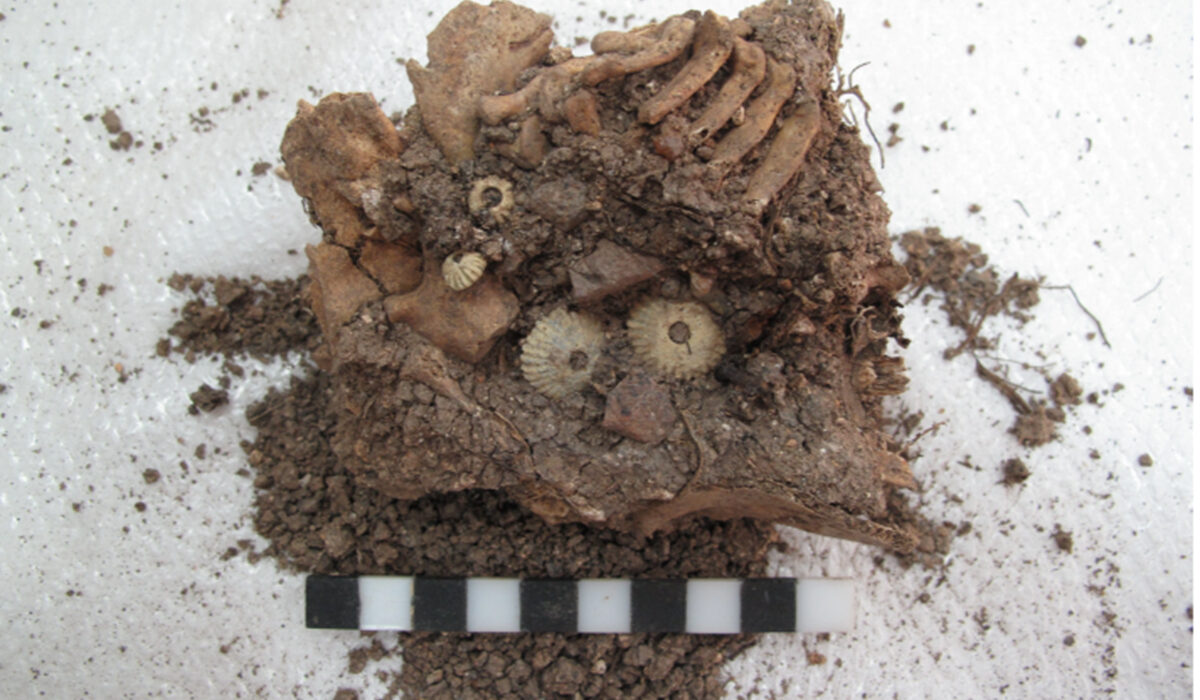In a groundbreaking revelation, the first confirmed case of Down syndrome in Ancient Greece has been unearthed on the idyllic island of Aegina, as detailed in a recent study published in the esteemed journal Nature Communications.
The poignant discovery stems from DNA analysis conducted on the skeletal remains of a young girl aged 12-16 months, residing in a Mycenaean settlement near the village of Lazaridis during the 13th century BC. The research unequivocally demonstrates that the child bore the genetic imprint of Down syndrome, a condition characterized by the presence of an extra copy of chromosome 21, resulting in 47 chromosomes instead of the usual 46 and influencing both cognitive and physical development.
Adorned with an intricate necklace comprising 93 beads crafted from faience and vitreous materials, along with six made of cornelian, the burial reflects a tender acknowledgment of the care bestowed upon the child in both life and death.
Since 2005, the Department of History and Archeology at the National and Kapodistrian University of Athens (EKPA) has been meticulously excavating the site, revealing a settlement and its accompanying cemetery. According to Naya Polychronakou-Sgouritsa, emeritus professor of Archeology at EKPA and director of the excavation, these findings underscore the flourishing of the Lazarids settlement during the 14th and 13th centuries BC, playing a pivotal role in the events of the wider Argosaronic Gulf.
A pivotal moment in the excavation occurred in 2010 when researchers stumbled upon an unexpected discovery – a small box-shaped tomb dating back to the 13th century BC. Within its confines lay the skeletal remains of a young child, accompanied by the aforementioned elaborate necklace.
This revelation sparked excitement among archaeologists, prompting the careful transfer of the find, soil and all, to the Conservation Unit of the Museum of Archeology and Art History of the Greek National Academy of Sciences for meticulous cleaning and preservation.
Osteological research by bioarchaeologist Dr. Eleanna Prevedorou revealed morphological characteristics indicative of a severe chronic disease or diseases. As Prevedorou poignantly describes, this was a young girl who likely endured a life marked by persistent illness and intense pain.
Subsequent genetic analyses conducted at the Max Planck Institute for Evolutionary Anthropology in Germany confirmed the presence of Down syndrome in the child. However, the extent to which the identified health issues were associated with the syndrome remains a subject of ongoing inquiry.
This discovery holds significant historical importance, marking the first identification of Down syndrome in ancient Greece. Professor Naia Polychronakou-Sgouritsa, emeritus of EKPA, emphasizes the rarity of such findings, noting that only a handful of cases have been recorded in ancient times, owing to the inherent challenges in identifying genetic disorders without the aid of modern techniques.





